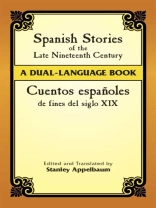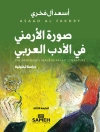These eleven tales are by four outstanding nineteenth-century authors whose work brought new life to Spanish literature. Published between 1870 and 1900, they include ‘El Hechicero’ (The Sorcerer), by Juan Valera, a highly polished allegorical retelling of an Andalusian legend. Pedro Antonio de Alarcón’s tale of bandits, ‘La buenaventura, ‘ appears with his ‘La Comendadora, ‘ inspired by an incident in a Granada convent. Three tales by Leopoldo Alas (‘Clarín’)–‘Adios, Cordera, ‘ ‘Cambio de luz, ‘ and ‘Benedictino’–exemplify the author’s remarkably protean style. Emilia Pardo Bazán’s stories (‘Afra, ‘ ‘La Santa de Karnar, ‘ ‘La cana, ‘ ‘Dios castiga, ‘ and ‘La Mayorazga de Bouzas’) take place in her native Galicia. All exhibit the violence that fascinated Pardo Bazán, along with the independent, courageous female characters who populate her work.
This dual-language edition features an informative introduction and ample footnotes, making it not only a pleasure to read but also a valuable learning and teaching aid for students and teachers of Spanish literature.
Daftar Isi
Introduction
Juan Valera
El Hechicero / The Sorcerer
Pedro Antonio de Alarcón
La buenaventura / The Gypsy’s Prediction
La Comendadora / The Nun of the Order of Saint James
Emilia Pardo Bazán
Afra / Afra
La Mayorazga de Bouzas / The Heiress of Bouzas
La Santa de Karnar / The Holy Woman of Karnar
La cana / The Gray Hair
Dios castiga / God Punishes
Leopoldo Alas (‘Clarín’)
¡Adiós, ‘Cordera’! / Good-bye, ‘Lamb’!
Cambio de luz / Change of Light
Benedictino / Benedictine
Tentang Penulis
Stanley Appelbaum served for decades as Dover’s Editor in Chief until his retirement in 1996. He continues to work as a selector, compiler, editor, and translator of literature in a remarkable range of languages that includes Spanish, Italian, French, German, and Russian.












